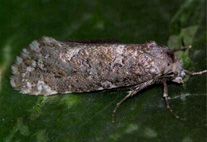Abstract
A study of benthic harpacticoids from the intertidal zone of Gosapo Beach, on the west (Yellow Sea) coast of Korea, resulted in the discovery of two species of Wellsopsyllus Kunz, 1981. The first new species, Wellsopsyllus (Wellsopsyllus) egregius sp. nov., was allocated to the nominotypical subgenus by a combination of three characters: 1) a 3-segmented P4 exopod, 2) 1-segmented P2–P3 endopods, and 3) a P1 endopod-2 with one apical seta. However, it can be clearly distinguished from its congeners by the following characters: 1) a caudal rami with two blunt setae and the seta VII located sub-distally, 2) a P2 and P3 endopod represented by a small blunt process, and 3) the semioval shape of P5. The second new species was placed in the subgenus Scottopsyllus Apostolov & Marinov, 1988 according to the 3-segmented exopod and 2-segmented endopod of P4. Wellsopsyllus (S.) koreanus sp. nov. exhibits a unique combination of characters: 1) a dimpled distal margin of the female P5 endopodal lobe armed with two subequal setae, 2) a caudal seta V consisting of a stout spine-like base with a long cylindrical seta-like portion arising subdistally, and 3) a distinct bundle of five long inner setules on the P1 basis. We present a summary of the characters of all species in the genus Wellsopsyllus and propose an updated key for their identification.

